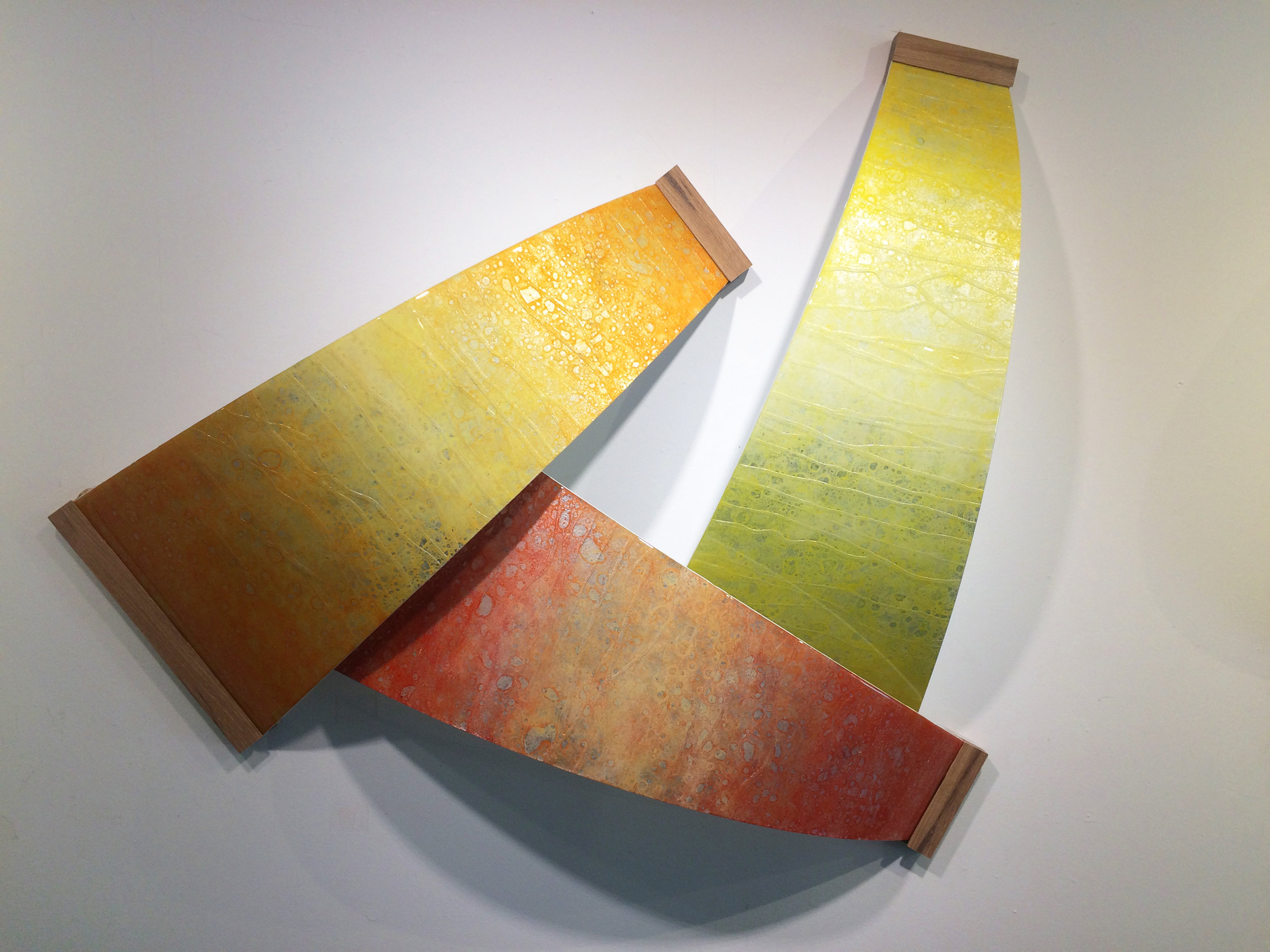With all the people strolling through my art studio in Asheville, I am asked a whole lot of questions. Usually, they’re pretty much the same questions like:
What’s the shiny stuff on your paintings? Answer: it’s solar resistant resin.
Do you HAVE to paint on aluminum leaf? Answer: Define “HAVE” to.
How long have you been painting? Answer: Since I was four.
Are you St.Claire? Answer: Yes. You wanna kiss my ring?
Are these all local scenes? Answer: Not all, but mostly.
What are all the circles? Answer: What do YOU think they are?
Is there a restroom nearby? Answer: Yes, the blue door over there on the right
Last week, I was asked a question I don’t remember ever being asked before: “How do you know when a painting is done?” Hmmm. I’ve never really thought about that. My first thought was “well, how do you know when your dinner is done?” It’s just done when it’s done, right? But then I started analyzing that decision and realized the answer is pretty complex.
It’s just done when it’s done, right?
There are at least twenty steps each painting goes through to bring it from beginning to completion and I know from experience when a painting is getting close to that end point. I’m working with layer on layer of texture underneath a thin layer of aluminum leaf. And then I begin applying thin layer on thin layer of oil paint. I’ll first apply the paint on the piece per the different color families I’m using. I’ll apply the warm colors first, let them dry, then apply the cool colors (or the other way around), and work from the farthest background (usually the sky in a landscape) up to the foreground, letting each step dry before working on the closer section. Then I repeat, and repeat and repeat. Each time I apply another layer of paint, the colors are enriched. The very end of the process is just working with contrast so that the piece “pops”, so I’ll darken the darks and lighten the lights in certain areas so that the eye is led by the contrast of those two elements.
And then…I ask Joy if it’s done and she gets the last word. There’s a life lesson there I think.









